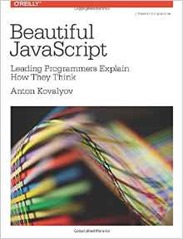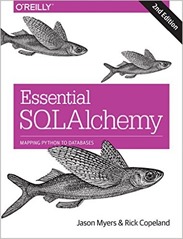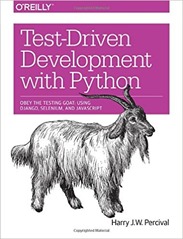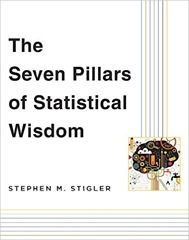In the spirit of improving my software engineering practices I have been trying to make more use of the Python logging module. In common with many programmers my first instinct when debugging a programming problem is to use print statements (or their local equivalent) to provide an insight into what my program is up to. Obviously, I should be making use of any debugger provided but there is something reassuring about the immediacy and simplicity of print.
A useful evolution of the print statement in Python is the logging module which can be used as a simple print function but it can do so much more: you can configure loggers for different packages and modules whose behaviour can be controlled centrally; you can vary the verbosity of your logging messages. If you decide to switch to logging to a file rather than the terminal this can be achieved too, and you can even post your log messages to a website using HTTPhandler. Obviously logging is about much more than debugging.
I am writing this blog post because, as most of us have discovered, using logging is not quite as straightforward as we were led to believe. In particular you might find yourself in the situation where you feel you have set up your logging yet when you run your code nothing appears in your terminal window. Print doesn’t do this to you!
Loggers are arranged in a hierarchy. Loggers have handlers which are the things that cause a log to generate output to a device. If no log is specified then a default log called the root log is used. A logger has a name and the hierarchy is defined by the dots in the name, all the way “up” to the root logger. Any logger can have a handler attached to it, if no handler is attached then any log message is passed to the parent logger.
A log record has a message (the thing you would have printed) and a “level” which indicates the severity of the message these are specified by integers for which the logging module provides convenient labels. The levels in order of severity are logging.DEBUG, logging.INFO, logging.WARNING, logging.ERROR, logging.CRITICAL. A log handler will output a message if the level of the message is equal to or more than the level it has been set to. So a handler set to WARNING will show messages at the WARNING, ERROR and CRITICAL levels but not the INFO and DEBUG levels.
The simplest way to use the logging module is to import the library:
import logging
Then carry out some minimal configuration,
logging.basicConfig(level=logging.INFO)
and then put logging.info statements in our code, just as we would have done with print statements:
logging.info("This is a log message that takes a parameter = {}".format(a_parameter_value))
logging.debug, logging.warning, logging.error and logging.critical are used to publish log messages with different levels of severity. These are all convenience methods which remove the need to explicitly give the level as found in the logging.log function:
logging.log(logging.INFO, "This is a log message")
If we are writing a module, or other code that we anticipate others importing and running then we should create a logger using logging.getLogger(__name__) but leave configuring it to the caller. In this instance we use the name of the logger we have created instead of the module level “logging”. So to publish a message we would do:
logger = logging.getLogger(__name__)
logger.info("Hello")
In the module importing this library you would do something like:
import some_library
logging.basicConfig(level=logging.INFO)
# if you wanted to tweak the levels of another logger
logger = logging.getLogger("some other logger")
logger.setLevel(logging.DEBUG)
basicConfig() configures the root logger which is where all messages end up in the absence of any other handler. The behaviour of logging.basicConfig() is downright obstructive at times. The core of the problem is that it can only be invoked once in a session, any future invocations are ignored. Worse than this it can be invoked implicitly. So if for example you do:
import logging
logging.warning("Hello")
You’ll see a message because secretly logging has effectively run logging.basicConfig(level=logging.WARNING) for you (or something similar). This means that if you were to then naively go ahead and run basicConfig yourself:
logging.basicConfig(level=logging.INFO)
You would see no message when you subsequently ran logging.info(“Hello”) because the “second” invocation of logging.basicConfig is ignored.
We can explicitly set the properties of the root logger by doing:
root_logger = logging.getLogger() root_logger.setLevel(logging.INFO)
You can debug issues like this by checking the handlers to a logger. If you do:
import logging lgr = logging.getLogger() lgr.handlers
You get the empty list []. Issue a logging.warning() message and you see that a handler has been added to the root logger, lgr.handlers() returns something like [<logging.StreamHandler at 0x44327f0>].
If you want to see a list of all the loggers in the hierarchy then do:
logging.Logger.manager.loggerDict
So there you go, the logging module is great – you should use it instead of print. But beware of the odd behaviour of logging.basicConfig() which I’ve spent most of this post griping about. This is mainly so that I have all my knowledge of logging in one place rather than trying to remember which piece of code I pulled off a particular trick.
I used the logging documentation here, blog posts by Fang (here) and Praveen Gollakota (here) and tab completion in the ipython REPL in the preparation of this post.


 Essential SQLAlchemy
Essential SQLAlchemy Test-Driven Development with Python
Test-Driven Development with Python The Seven Pillars of Statistical Wisdom
The Seven Pillars of Statistical Wisdom